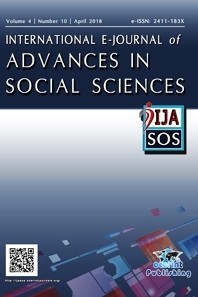
International E-Journal of Advances in Social Sciences
Yazarlar: Merve Güroğlu, Deniz Erinsel Önder
Konular:-
DOI:10.18769/ijasos.50030
Anahtar Kelimeler:-
Özet: Perception is the process of acquiring information from the environment. The concept of perception explains the relationship of humans with the environment, and it is shaped by several different stimuli, such as the social, cultural, and physical environments. Children’s perception is different from that of adults, and it develops gradually through the cognitive development periods of childhood. Children have had very little experience of the fast-changing environment around them, and thus they should grow in their own natural rhythm to become a part of society. To achieve this, children need time and places in which they can explore their environment by playing to improve their cognitive processes. The most important thing in a child’s life is playing games. As long as a child plays games, he explores himself and his environment, and thus achieves satisfaction. In this way, the child finds the opportunity to acquire perceptual, cognitive, physical, and social gains, and he forms his spatial imagery through the stimuli that he gets from the environment. In the past, children played freely in the traditional neighborhoods; they could make their own playing fields in dead-end streets and could explore nature and themselves through games. However, today, children in big cities are confined to playing under their parents’ supervision and within a limited time period. Indoor places have replaced children’s natural playing fields. With the increasing traffic and crime rate, children cannot explore their environment, nor can they play in front of their houses, on the sidewalk, or the street. However, the importance of the environment, in which the child lives, is great on his physical and social development. The more a child becomes integrated with his environment, the more he develops his environmental perception by finding opportunities to explore his environment and himself. This study aims to determine the way in which living in the countryside or in a big city affects children’s perception of playing fields, and how this affects their use of these spaces. To achieve this, surveys were conducted with children living in different physical environments; by getting the children to draw pictures, we enabled them to transfer their mental schema onto the paper. The results of this study indicate that children’s playing field perception varies according to the different stimuli presented in rural and urban areas. It is also shown that the spatial imagery formed by children is different as a result of this difference in perception. Moreover, it can be determined that children are influenced by the advantages and disadvantages of the environment that they live in. It is seen that negative factors, such as the increasing vehicle traffic and crime rates in big cities, have an impact on the selection of playing fields. The information obtained from this study is intended to improve design decisions regarding the areas children use for playing, which have a significant role in their development. The study also aims to find solutions that will meet the expectations of children in these places. Keywords: Child, play, playing field, perception, space imagery, cognitive development.